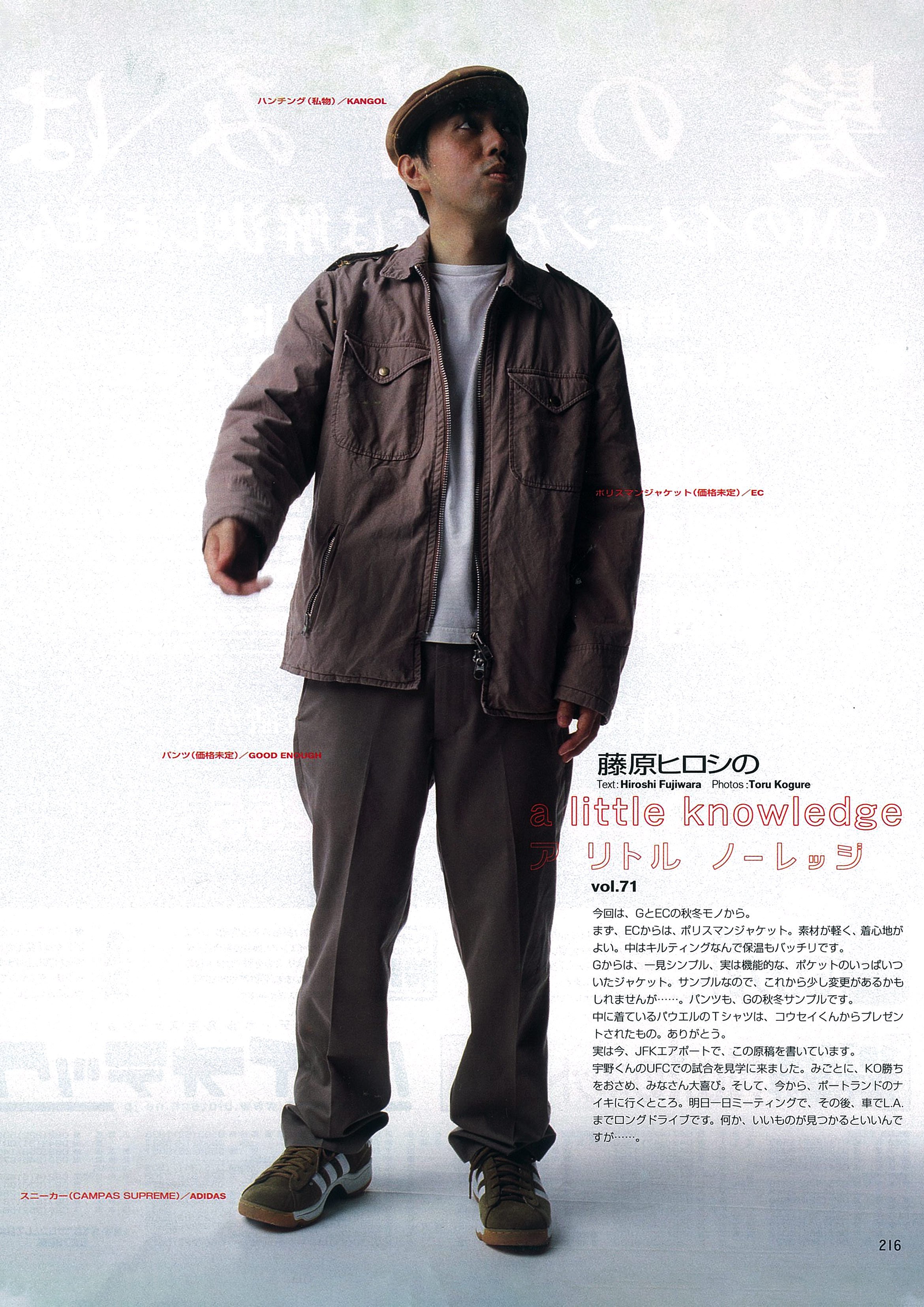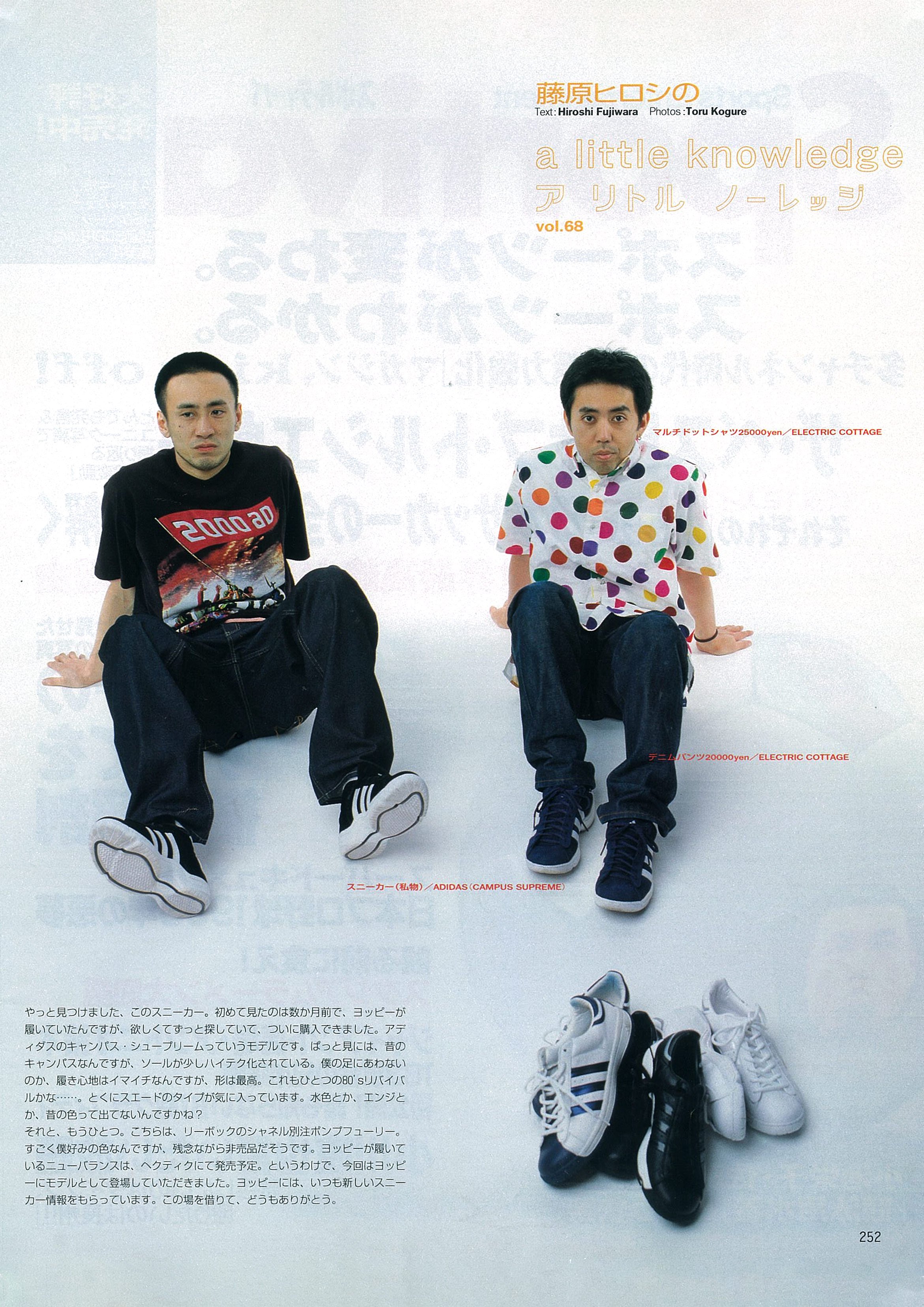From Ura-Hara to the Future - The adidas Originals CAMPUS SUPREME SOLE

The German sportswear giant adidas has been on a roll these last few years. From last year's iconic Adimatic re-release to countless collaborations executed flawlessly, the brand has been bringing out a perfect balance of retro and contemporary designs. Once again, the three stripes are back with a classic re-release of one of their pasts unconventional retakes of their all time classics: the adidas Originals CAMPUS SUPREME SOLE.
Originally released as the CAMPUS SUPREME in 1999, adidas embraced the zeitgeist by having reconsidered one of their most iconic footwear models: the Campus. The original Campus 80s, initially called “The Tournament”, was an Adidas pro-basketball shoe that made waves for its clean cut yet chunky silhouette. However the CAMPUS SUPREME stood out for its models’ low-tech simplicity with an entirely new performance sole. A design that was familiar but striking for its fusion of classic and innovative design.
But what made this shoe so iconic? The name of the classic’s adaptation might not ring a bell to many, especially to those outside of Japan. Similar to the Adimatic, the CAMPUS SUPREME was another adidas shoe in which the Japanese fashion icons of the Ura-Harajuku ages first found beauty in. Yet, to understand the whole story behind the shoe, we need to start with the OG Campus, and how it was perceived back then.
Today, you might not see as many people rocking the Campus compared to the Superstar or Samba. Back in the late 80s, the Superstar was adidas' "it" shoe through Run-D.M.C. famously having made it a part of their uniform. This was the first big clash of the three stripes and street culture, leading the shell-toe classic to be sported by skater legends like Kareem Campbell or Harold Hunter. But meanwhile the Superstar’s popularity, another model started taking over the spotlight, thanks to other rap ensembles like the Beastie Boys. While the Run D.M.C. style code was defined by baggy silhouettes, the Beastie Boys went for a sleeker and slimmer look. The appearance in videos and photoshoots created more and more buzz around the Campus, leading it to become a staple in various subcultures.
But what made adidas put a chunky performance sole on one of their most iconic classics? A big reason behind this was the 90s and 00s being a time when low-tech and high-tech were blending. This was the real "Y2K" era, and design-wise a big transition period not only for adidas, but for the world in general. If you look at adidas, possibly the best example of this low-tech x high-tech fusion was their signing of Mark Gonzales, one of the most legendary skaters at the time. His signature adidas shoes left all trends aside and introduced a fresh design that stood apart from the competition.
The adidas CAMPUS SUPREME was another one of these shoes that was released during that era. A tasteful blend of retro and future, ending up to become a classic of an unexpected market — Japan. Similar to the Adimatic, the CAMPUS SUPREME originally didn't end up catching the eyes of the western market. However Japan and its Ura-Harajuku scene had an entirely different perspective, eventually leading it to include the CAMPUS SUPREME to its highly distinguished style.
If you take a look at some of our other Ura-Hara related articles, it won't take long to see that there are a few names that are said to be the founding fathers of Ura-Hara culture. Hiroshi "HF" Fujiwara, NIGO, Jun "Jonio" Takahashi, are some of them. Their magazine serializations like the iconic "LAST ORGY" series, Hiroshi's "HFA" or "a little knowledge", were basically what shaped the culture. Everything and anything that was shown or featured in these magazine columns would instantly sell out everywhere in Japan.
Japanese magazine insert of the adidas CAMPUS SUPREME
Hiroshi Fujiwara is now widely considered to be the "godfather of streetwear" as the single most impactful figure from the Ura-Harajuku era. Any shoe, piece of clothing, album, movie, or even toy he shared in his numerous magazine serializations would become the next big thing. Basically, he was the Instagram before Instagram.
Hiroshi Fujiwara in “a little knowledge” column
However, although he is seen wearing the CAMPUS SUPREME a number of times in various magazines, he wasn't actually the one who first started to embrace them. It was Yoshifumi "YOPPI" Egawa, another Ura-Hara legend, who dug them up and showed them to Hiroshi. Back in 2001, in Hiroshi's "a little knowledge" series, there is a volume where he is portrayed alongside YOPPI, both wearing the CAMPUS SUPREME. In this volume, Hiroshi mentions that he first saw YOPPI wearing them, ultimately making him want to get his own hands on a pair.
YOPPI & Hiroshi Fujiwara in “a little knowledge" column
Like we mentioned above, anything that Hiroshi displayed in magazines instantly became a hit in Tokyo. And as the city was an integral part in defining the global streetwear scene of the future, the CAMPUS SUPREME remains as one of the adidas archives’ hidden gems.
For its re-release, we took the 2023 release of the adidas Originals CAMPUS SUPREME SOLE to the streets of Tokyo to shoot an editorial, reminiscing its Ura-Hara roots while adding a modern twist through the lens of sabukaru. Together with footwear giant atmos, adidas will be re-releasing its classic model as the CAMPUS SUPREME SOLE.
Also check out our friend’s over at MIMIC’s 2-part in depth breakdown of adidas at the time & the CAMPUS SUPREME in Japanese here.
《あんときのストリート》を振り返るウェブメディア、ミミックによる日本語でのadidasの外しの美学、CAMPUS SUPREMEの歴史をフィーチャリングした記事もぜひチェックだ。
Editorial Credits:
Production - BIANCOBIANCO
Director - Natsuki Ludwig
Photo - LUSAN
Photo Assistant - Nate
Styling - Casey Takumi Omori
Model - Yudai







